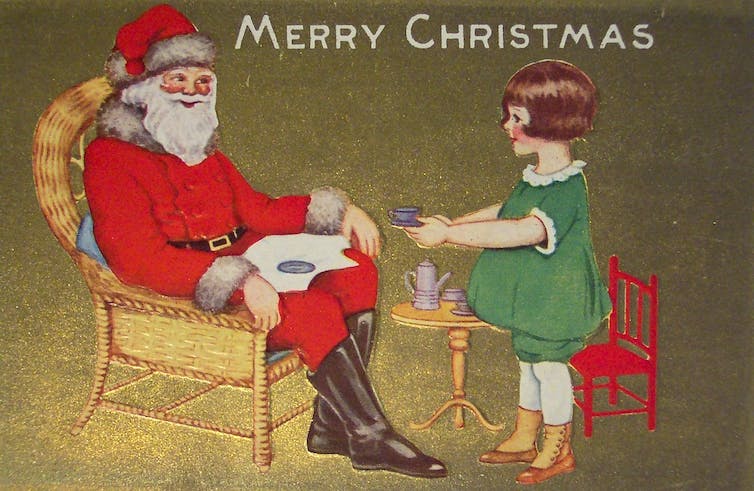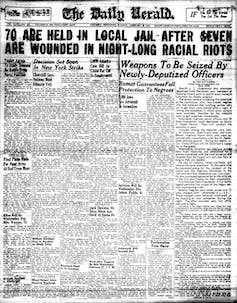What toy should I buy my niece for Christmas? No easy task, since I was never an eight-year-old girl. For my brother, a bottle of whisky. But hasn’t he stopped drinking it lately? And my aunt? The Prix Goncourt of the year, as always. But I’m not sure he’s interested in the story this time.
For my partner, it’s easier, I know her tastes and everything she already owns. In any case, no money for either of them – possibly a gift voucher if I don’t have time to scour the shops and websites. The economics of gift-giving never cease to fascinate me.
In the early 1990s, they baffled a young assistant professor at Yale University, Joel Waldfogel. Intrigued by the economic theory of rational consumer choice, Waldfogel took issue with the Christmas tradition of giving something to someone else without fully knowing their preferences. Had he spent 50 dollars on a present for a loved-one, he reasoned, the recipient would have likely been better qualified to direct that money toward something more suited to their taste.
He then asked the students on his microeconomics course to estimate the price of the gifts they recently received for Christmas, and what they would be prepared to fork out for their gifts had they not received them. One person answered that the sweatshirt they found under the tree cost €50 in the shops, but that they would have only been willing to pay €43 had they had to buy it.
Gift-giving: a deadweight loss?
The young teaching assistant observes a systematic difference of around 20% between the two estimates of the students interviewed. Applying this ratio to the sales figure for Christmas 1992, he deduced that the exchange of gifts resulted in a deadweight loss to society of several billion dollars. To correct this inefficient allocation of resources, he recommended giving money rather than wrapped presents – i.e. a 50 euro note rather than 7 euros wasted on a surprise sweatshirt.
But his economic reasoning is flawed and absurd.
But before I explain why, let’s note that had his reasoning been correct, the loss of wealth would be even greater today. Spending on Christmas presents has risen considerably since the early 1990s. China and its low-cost production have been there.
Take toys, for example. The Middle Kingdom accounts for around three quarters of global production.
All the companies in the rest of the world source their supplies or manufacture there. Even Lego ended up building a factory there. European consumers appreciate this, having seen the price of toys steeply fall over the past decades.
At the same time as this unit decline, the budget allocated to Christmas presents is steadily increasing. In the United States, spending per household has increased by almost 40% over the last 30 years. Some people have a problem with this spending spree. Two out of ten Americans say they went into debt for Christmas. And just over one in two say it’s the time of year when they don’t have to worry about spending money. The same may be true for you. In any case, marketing experts and salespeople know this, and they’re having a field day trying to get us to spend money at this time of the year.
Had Waldfogel been right when he calculated that one-fifth of Christmas gift spending goes up in smoke, the bill – or rather the subtraction – would be even higher today. But there’s no need to worry because, as announced above, he’s wrong.
Reciprocity
Intuitively, this won’t surprise you. Imagine giving your partner money under the Christmas tree rather than a present. They’re unlikely to react any more positively than they would to a beautifully wrapped present. The same goes for the friend who has invited you to New Year’s Eve dinner, when you hand them a 10 or 20 euro note on the doorstep instead of a bottle of wine or a bouquet of flowers!
And Christmas presents are usually reciprocal. Imagine an exchange of envelopes between spouses, each containing 50 euros. Great, the two gifts cancel each other out! Note that the situation would undoubtedly be even trickier if one put far fewer notes in one’s envelope than the other.
Modern-day economists make no mistake. In 2013, nearly fifty of them, most of them teaching at Chicago, Harvard, MIT, Stanford and Berkeley, had been asked to respond to the following proposal:
“Giving specific gifts as party favours is inefficient because recipients could satisfy their preferences much better with cash.
Only a small minority agreed. As for the seven winners of the “Nobel” prize for economics questioned in the group, they were unanimously against.
Anthropologists would surely have been even more unanimous. As keen observers of giving in traditional and modern societies, they know more about this complex subject than anyone else. They can only denounce the reductionism of Joel Waldfogel. But by looking to economics for a rebuttal, we can brush up our knowledge of consumer theory.
The loss between the gift of a wrapped present and the gift of money has its origins in the now outmoded model of a consumer who chooses what they buy in a perfectly rational way: they know their own preferences intimately and calculate, for all goods and on the basis of their means, what would maximise their pleasure, or utility, as the economists would say. Like Homo œconomicus, they are therefore unbeatable in their choice of purchases.
Dave/Flickr, CC BY-SA
Joel Waldfogel’s merit would then have lay in being the first to measure to what extent the person who chooses instead of the consumer is beaten. Except that his approach isn’t strictly orthodox. In the eyes of a purist, he is committing a sin: he is capturing utility through a monetary measure and comparing utility between people. In a way, this amounts to making money the universal instrument for measuring pleasure, and a dollar for the giver is worth as much as a dollar for the receiver, even though the former may be richer than the latter, or vice versa; something that is contested by theorists.
The pleasure of giving
Moreover, the theoretical model of the consumer has shifted away from perfect rationality and is currently seeking to integrate the affects (feelings and emotions) and motivations (family devotion, altruism, socialisation, etc.) that guide its choices. The wrapped gift can therefore be appreciated as a signal of the giver’s attachment, because they have thought about it and spent time choosing it, or even because it simply provides a few minutes spent discovering a surprise, the time it takes to remove the ribbon and open the package.
In short, there’s more to a gift than its monetary value. What’s more, as soon as the question put to the students is no longer to estimate the price of the gift received, telling them to leave out the sentimental value, but to ask about its total value, understood as its material value plus its sentimental value, a gain rather than a loss appears.
Strictly speaking, the donor’s satisfaction should also be taken into account. Isn’t it said that the pleasure of giving is often greater than the pleasure of receiving? The consumption of the gift received can also give rise to a positive feedback effect, such as the smile and thanks of the recipient.
Our relationship to gifts in practice
After these considerations on how we should and could behave with our Christmas presents, it might be time to take a look at what happens in practice. What do the polls and surveys say?
Firstly, the vast majority of gift-givers are satisfied with the presents they receive. In Europe, only one in seven has received a gift they don’t appreciate, with France having the highest proportion. Donors are therefore quite right. Some may have been helped by suggestions from the friends and family of the person they wanted to give a present to. Or even by asking them directly what they want for Christmas!

Pixel-Shot
Secondly, the gift of money is very much in the minority – one person in 10 receives one among all their gifts. The gift card still far outstrips it. It avoids giving a soulless cheque or notes and reduces the chances of a specific gift being disliked. But it shifts the burden of going to the shop, whether brick and mortar or online, onto the recipient. According to one consumer association, an American spends about fifteen hours shopping plus three hours wrapping gifts.
Lastly, gifts that don’t appeal have all sorts of fates. They usually end up at the bottom of a cupboard or drawer, but are sometimes thrown away with the wrapping paper.
To avoid waste, gifts can be passed on, exchanged in a shop, or donated to charity.
Given the commercial scale of the Christmas season and the avalanche of gifts it triggers, we may also be tempted to return to a more sober tradition of giving to others. Many charities accept gifts for redistribution.
You can donate any of the gifts you have received that you don’t like or that you already have. You can also donate a gift that you like, but that would be more pleasing or even more useful to others: this would be no more an economic heresy than sending a cheque or transferring money to a charity.




